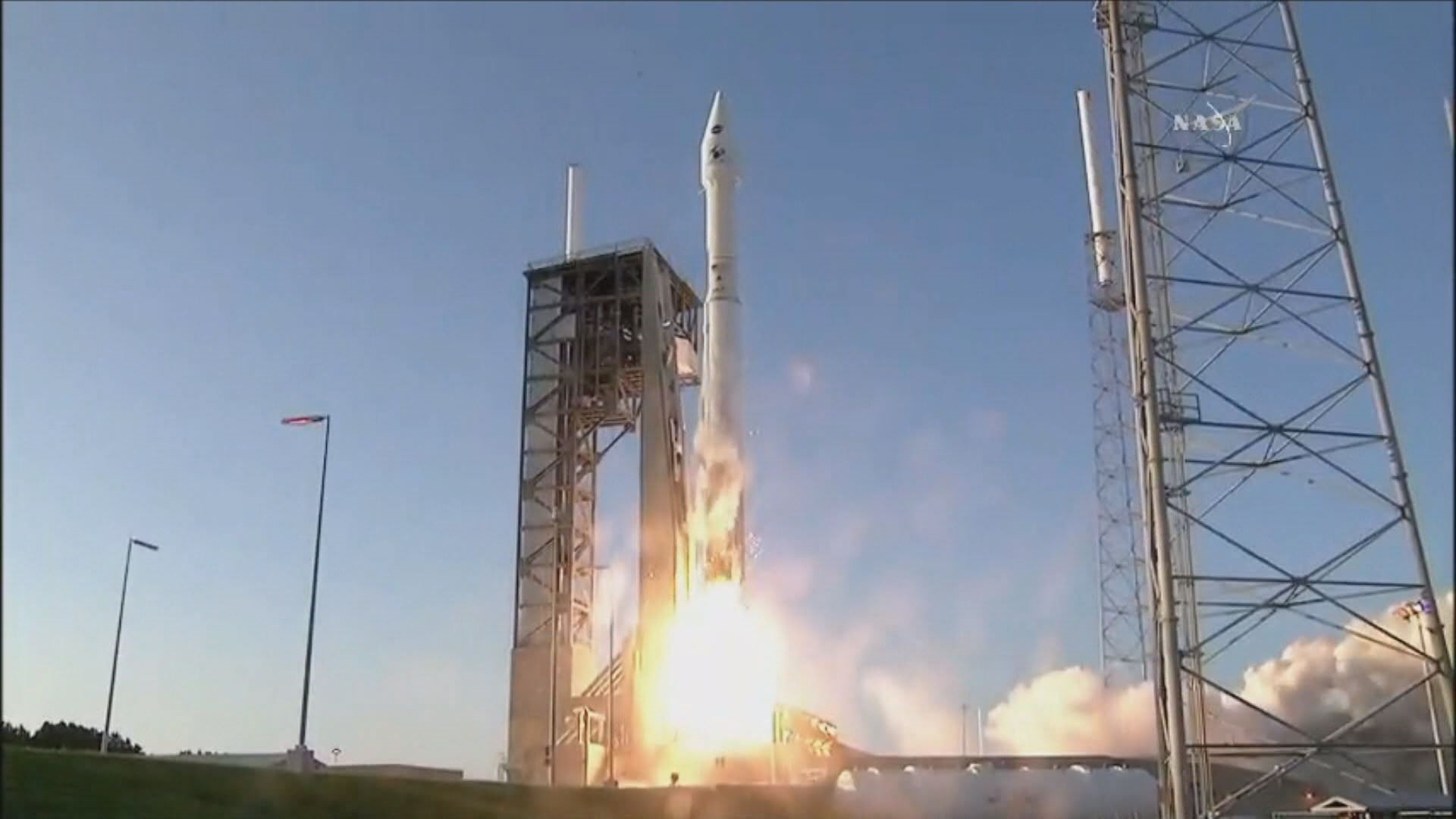Scientists and space aficionados celebrated the successful launch of an $800 million dollar spacecraft in a large auditorium at the NASA Goddard Space Flight Center on Thursday; watching the OSIRIS Rex begin its ambitious, seven year mission.
“This mission is special because its three missions in one,” Goddard’s chief scientist, Jim Garvin, explained. “We’re going to an asteroid. We’re mapping an asteroid. We’re touching and tasting an asteroid. We’re bringing it home! We’re measuring how asteroids in space move around. Normally we do each of those in a separate mission. This mission does it all at once. Basically for the price of a blockbuster movie. Not too bad!”
The OSIRIS Rex will slingshot around the sun and earth and spend two years traveling to a near-Earth asteroid named Bennu. Once there, it will spend another two years orbiting and mapping the asteroid, which is believed to be as old as the solar system itself – and largely untouched in those 4.5 billion years.
At the most complicated part of the mission, the robotic spacecraft will descend to near the asteroid’s surface, and use a robotic arm to tag the surface – a maneuver Garvin described as a high-five.
Any dust or rocks kicked up will be vacuumed into a canister, which will arrive back on earth in June 2023, and is expected to land in the southern Utah desert.
Geronimo Villanueva, a NASA planetary scientist who worked on the OSIRIS project, said there could be a wealth of scientific information in the dust and rocks the probe brings back – even if its just a few ounces of total material.
“We want to learn where we come from, where life actually started, thanks to asteroids,” Villanueva said. “It’s like a time capsule to the past. So we’re going to learn more about it.”
The high-tech, 20 foot-tall OSIRIS was designed and built at the Goddard Space Flight Center, making today’s successful launch a huge point of pride for everyone involved. Garvin told WUSA9 the mission’s success could even be a springboard to future manned expeditions to an asteroid, or beyond.
“By going up and touching and interacting with a small asteroid – not much bigger than the international space station – we’re starting the process,” the scientist said.


